Optimization of Electron Beam Welding Joint of Water-Cooled Ceramic Breeder Blanket
Abstract
1. Introduction
2. Materials and Methods
3. Analytic Procedure
3.1. Residual Stress
3.2. Mechanical Properties
3.2.1. Impacting Test
3.2.2. Tensile Test
3.2.3. Lateral Bending Test
3.3. Microstructure Analysis
3.3.1. Microstructure Distribution of Welded Joint
3.3.2. Microstructure of HAZ
3.3.3. Microstructure of Welding Seam
3.4. Hardness Analysis
4. Conclusions
Author Contributions
Funding
Institutional Review Board Statement
Informed Consent Statement
Data Availability Statement
Acknowledgments
Conflicts of Interest
References
- Fang, J. Nuclear fusion energy—Clean energy in the future. Sci. Technol. West. China 2012, 11, 55–56. (In Chinese) [Google Scholar]
- Wan, Y. Development of fusion for the benefit of all mankind: HT-7 and HT-7U superconducting tokamak fusion experimental devices. Chinese Acad. Sci. 1999, 6, 473–475. (In Chinese) [Google Scholar]
- Huang, Q.; Wu, Q.; Liu, S.; Li, C.; Huang, B.; Peng, L.; Zheng, S.; Han, Q.; Wu, Y.; FDS Team. Latest progress on R&D of ITER DFLL-TBM in China. Fusion Eng. Des. 2011, 86, 2611–2615. [Google Scholar]
- Huang, Q.; Li, C.; Wu, Q.; Liu, S.; Gao, S.; Guo, Z.; Yan, Z.; Huang, B.; Song, Y.; Zhu, Z.; et al. Progress in Development of CLAM Steel and Fabrication of Small TBM in China. J. Nucl. Mater. 2011, 417, 85–88. [Google Scholar] [CrossRef]
- Hu, J.; Jiang, Z.Z.; Huang, J.H.; Chen, S.H.; Zhao, X.K.; Zhang, H. Effects of heat treatment processes on microstructure and impact toughness of weld metal of vacuum electron beam welding on CLAM steel. Trans. China Weld. Inst. 2012, 33, 67–71. (In Chinese) [Google Scholar]
- Hishinuma, A.; Kohyama, A.; Klueh, R.L.; Gelles, D.S.; Dietz, W.; Ehrlich, K. Current status and future R&D for reduced-activation ferritic/martensitic steels. J. Nucl. Mater. 1998, 258–263, 193–204. [Google Scholar]
- Kano, S.; Yang, H.; McGrady, J.; Hamaguchi, D.; Ando, M.; Tanigawa, H.; Abe, H. Study of radiation-induced amorphization of M23C6 in RAFM steels under iron irradiations. J. Nucl. Mater. 2020, 533, 152088. [Google Scholar] [CrossRef]
- Dulieu, D.; Tupholme, K.; Butterworth, G. Development of low-activation martensitic stainless steels. J. Nucl. Mater. 1986, 141–143, 1097–1101. [Google Scholar] [CrossRef]
- Polekhina, N.A.; Litovchenko, I.Y.; Almaeva, K.V.; Bulina, N.V.; Korchagin, M.A.; Tyumentsev, A.N.; Chernov, V.M.; Leontyeva-Smirnova, M.V. Features of Phase Transformations of Low-activation 12%-Chromium Ferritic-Martensitic Steel Ek-181. Russ. Phys. J. 2020, 62, 2314–2318. [Google Scholar] [CrossRef]
- Aubert, P.; Tavassoli, F.; Rieth, M.; Diegele, E.; Poitevin, Y. Low activation steels welding with PWHT and coating for ITER test blanket modules and DEMO. J. Nucl. Mater. 2011, 409, 156–162. [Google Scholar] [CrossRef]
- Jiang, Z.Z.; Huang, J.H.; Chen, S.H.; Ju, X. Microstructure transformation and mechanical properties of electron beam welded joints of fusion CLAM steel. Trans. China Weld. Inst. 2011, 32, 45–48. (In Chinese) [Google Scholar]
- Zhang, Y.; Wu, J.; Liu, Z.; Liu, S.; Lei, M.; Ma, J.; Atif, M.; Liu, Z.; Wang, R.; Shen, X.; et al. Finite element analysis on the first wall electron beam welding of test blanket module. Fusion Eng. Des. 2021, 162, 112131. [Google Scholar] [CrossRef]
- Xia, X.; Wu, J.; Liu, Z.; Shen, X.; Ma, J.; Liu, Z. Study of microstructure difference properties of electron beam welds with beam oscillation of 50 mm 316L in CFETR. Fusion Eng. Des. 2019, 138, 339–346. [Google Scholar] [CrossRef]
- Xia, X.; Wu, J.; Liu, Z.; Shen, X. Nonuniformity of electron beam welding joint for 316L thick plate of vacuum chamber window collar. J. Weld. 2019, 40, 53–58. (In Chinese) [Google Scholar]
- Fu, P.; Mao, Z.; Zuo, C.; Wang, Y.; Wang, C. Microstructures and fatigue properties of electron beam welds with beam oscillation for heavy section TC4-DT alloy. Chin. J. Aeronaut. 2014, 27, 1015–1021. (In Chinese) [Google Scholar] [CrossRef]
- Zheng, S.; Wu, Q.; Huang, Q.; Liu, S.; Han, Y. Influence of different cooling rates on the microstructure of the HAZ and welding CCT diagram of CLAM steel. Fusion Eng. Des. 2011, 86, 2616–2619. [Google Scholar] [CrossRef]
- ISO 17639:2003. Destructive Weld Test for Metallic Materials. 2003. Available online: http://std.samr.gov.cn/gj/std?op=ISO: (accessed on 5 August 2020).
- Jiang, Z.; Ren, L.; Huang, J.; Ju, X.; Wu, H.; Huang, Q.; Wu, Y. Microstructure and mechanical properties of the TIG welded joints of fusion CLAM steel. Fusion Eng. Des. 2010, 85, 1903–1908. [Google Scholar] [CrossRef]
- Raj, B.; Rao KB, S.; Bhaduri, A.K. Progress in the development of reduced activation ferritic-martensitic steels and fabrication technologies in India. Fusion Eng. Des. 2010, 85, 1460–1468. [Google Scholar] [CrossRef]
- Gao, X.; Liu, H.; Wang, Y.; Meng, F.Y.; An, J. Effect of post weld heat treatment on welding microstructure and properties of maraging stainless steel. J. Mater. Heat Treat. 2012, 33, 87–91. [Google Scholar]


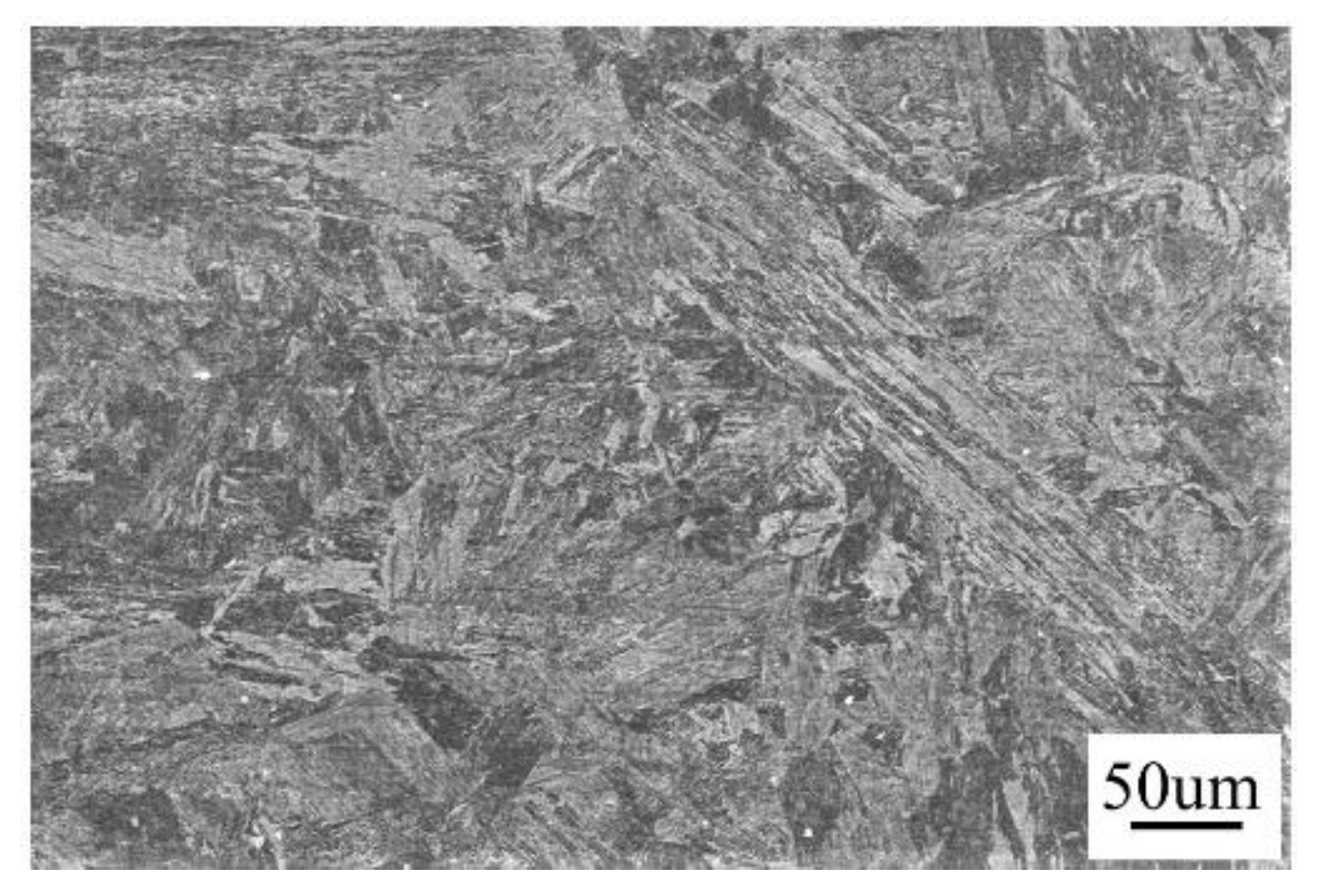

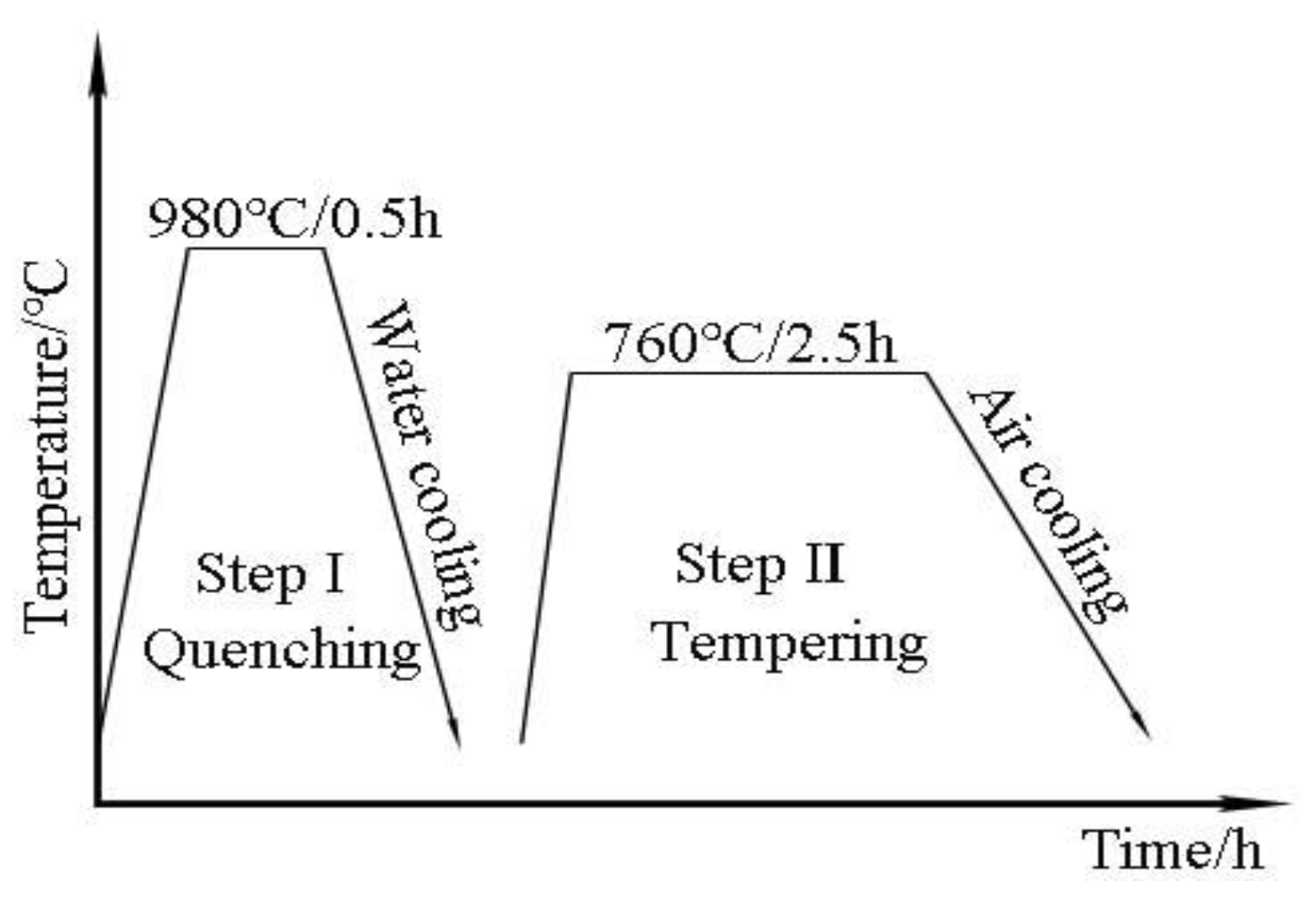

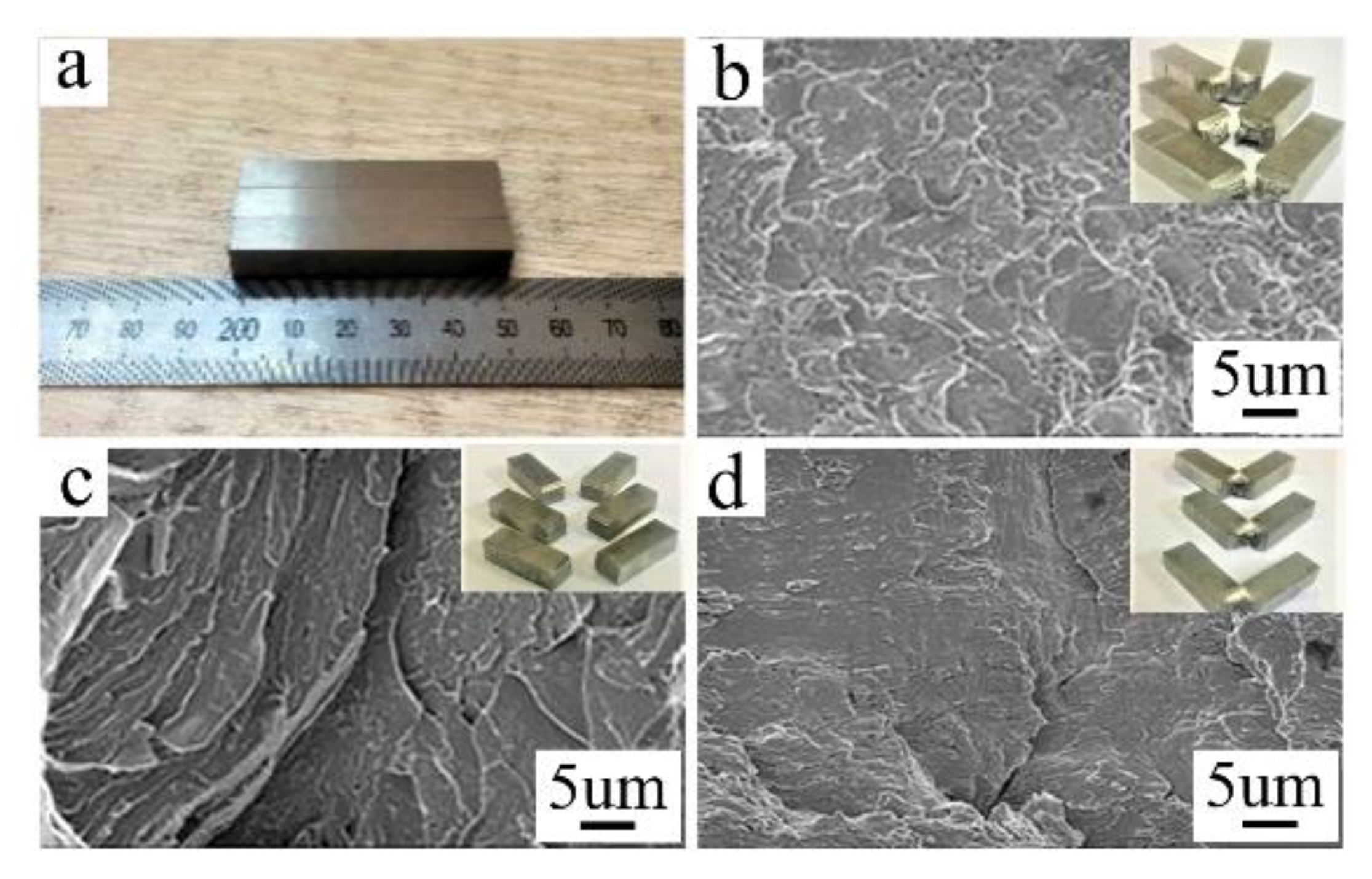
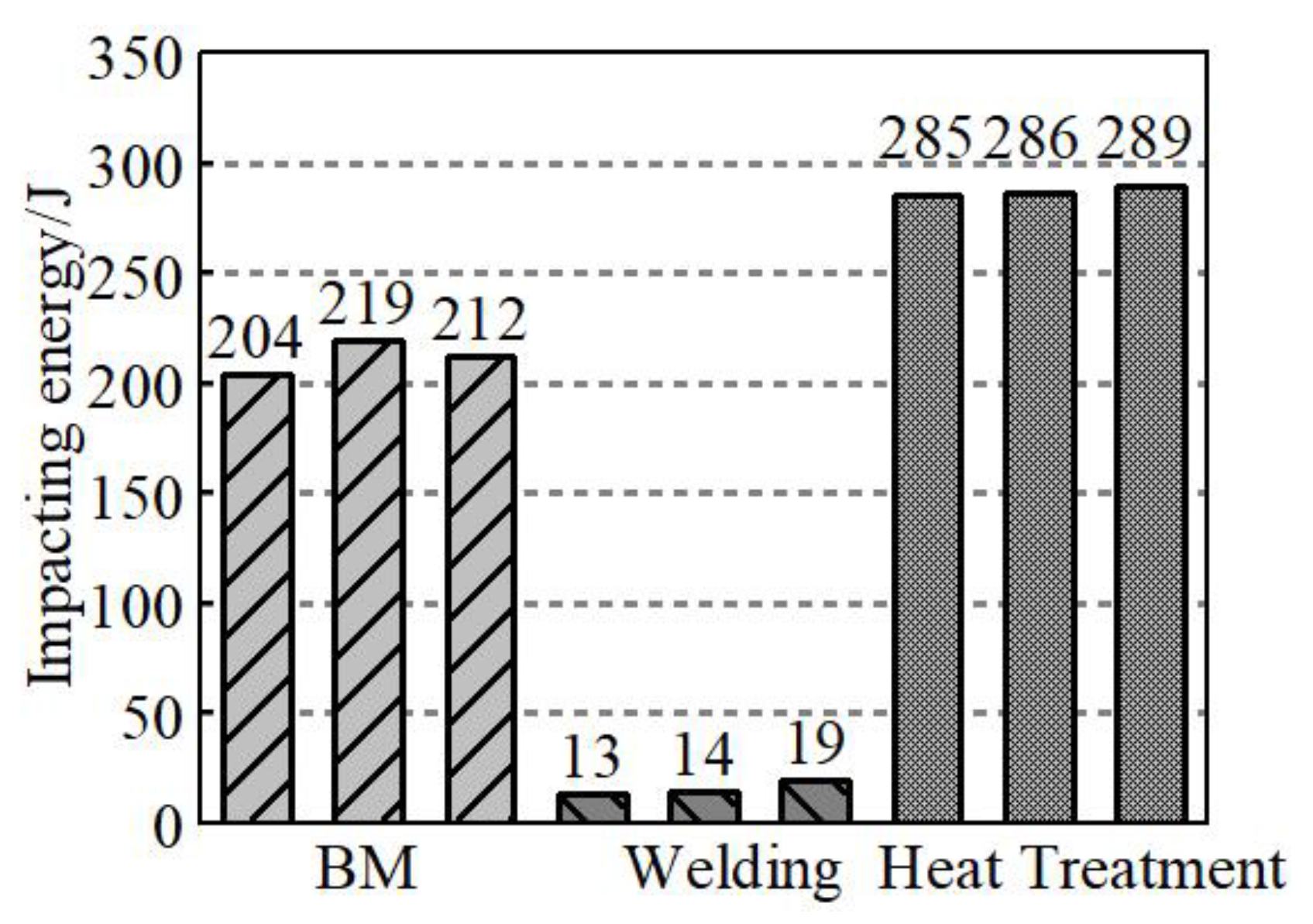
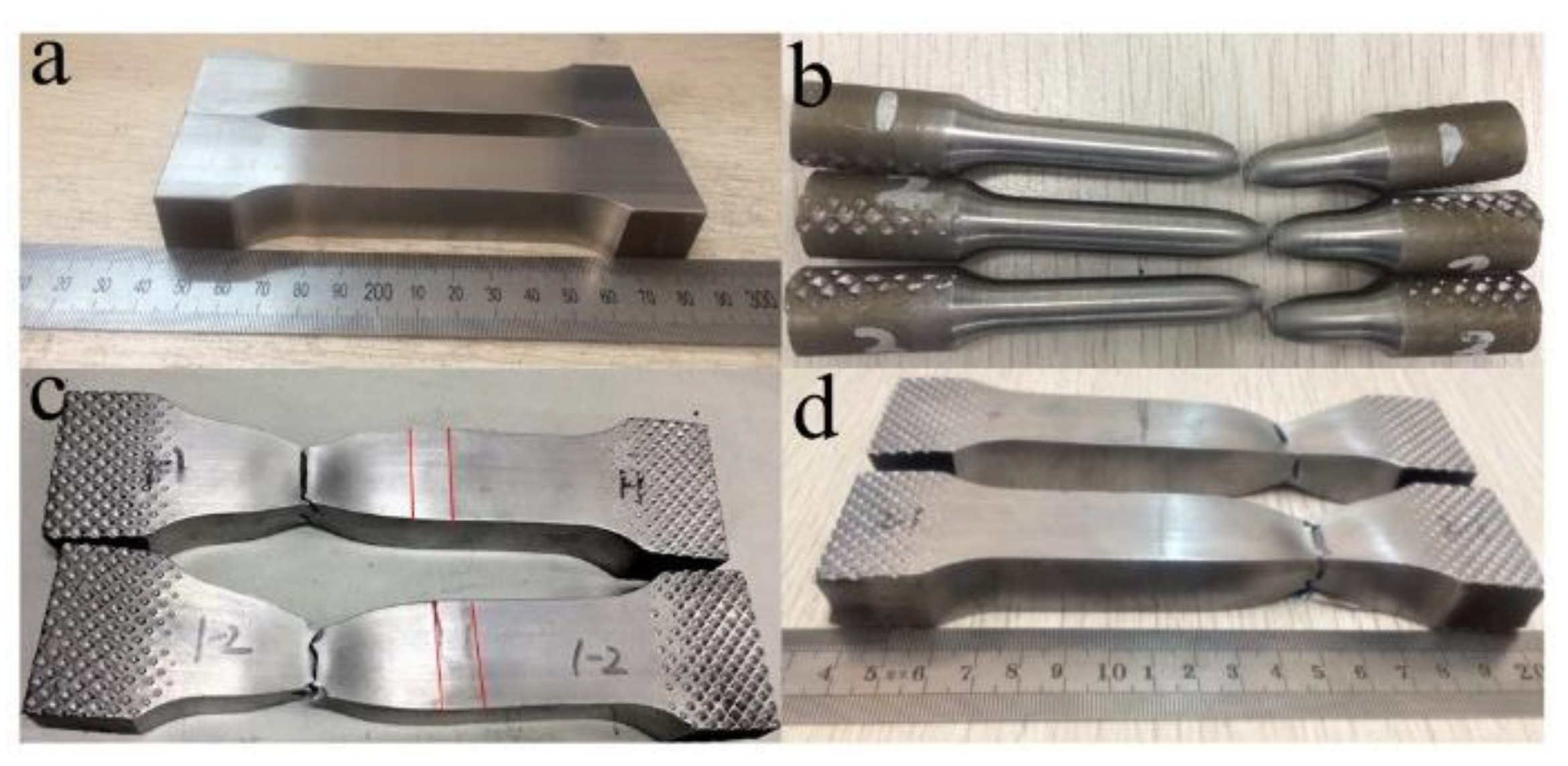
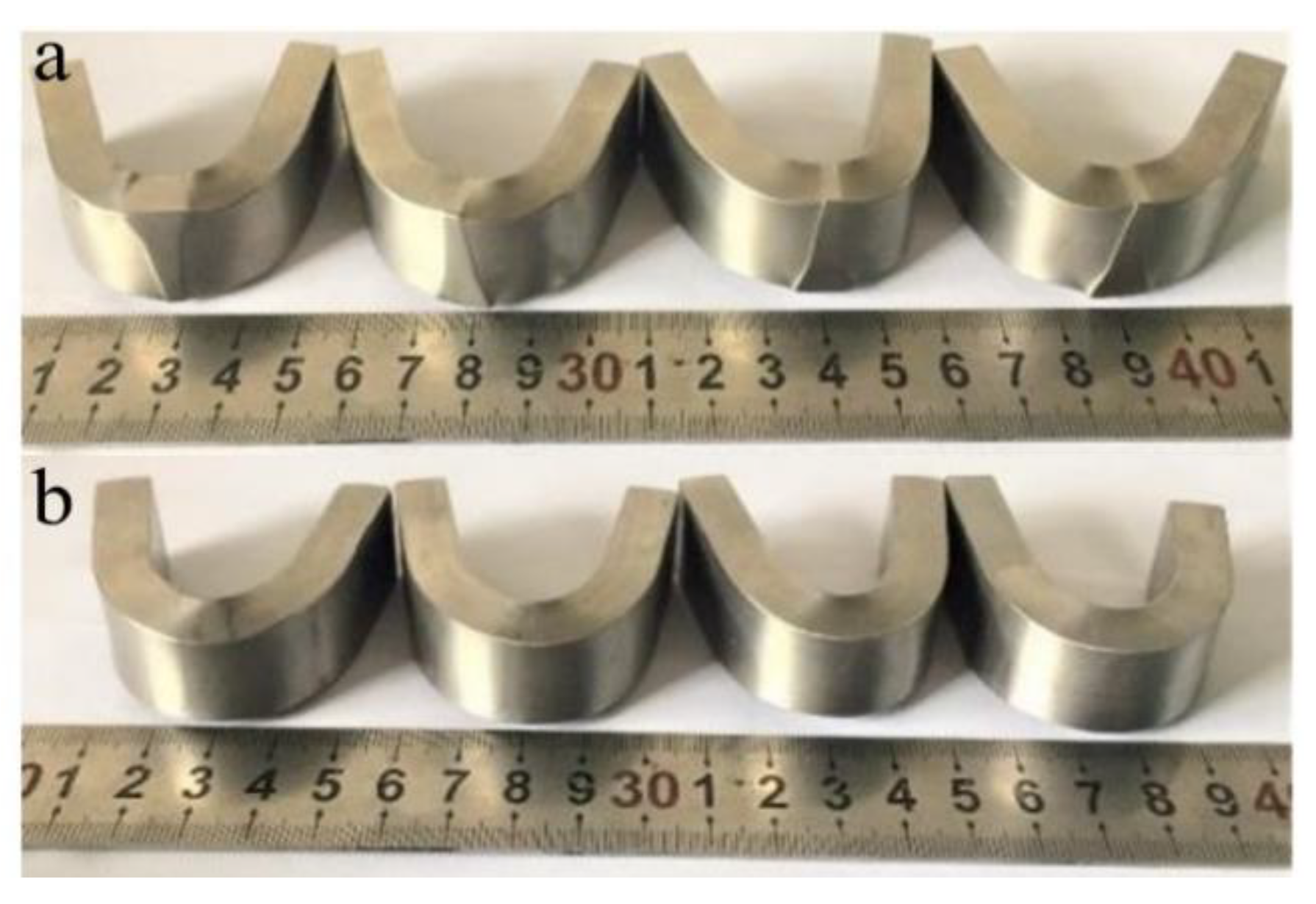
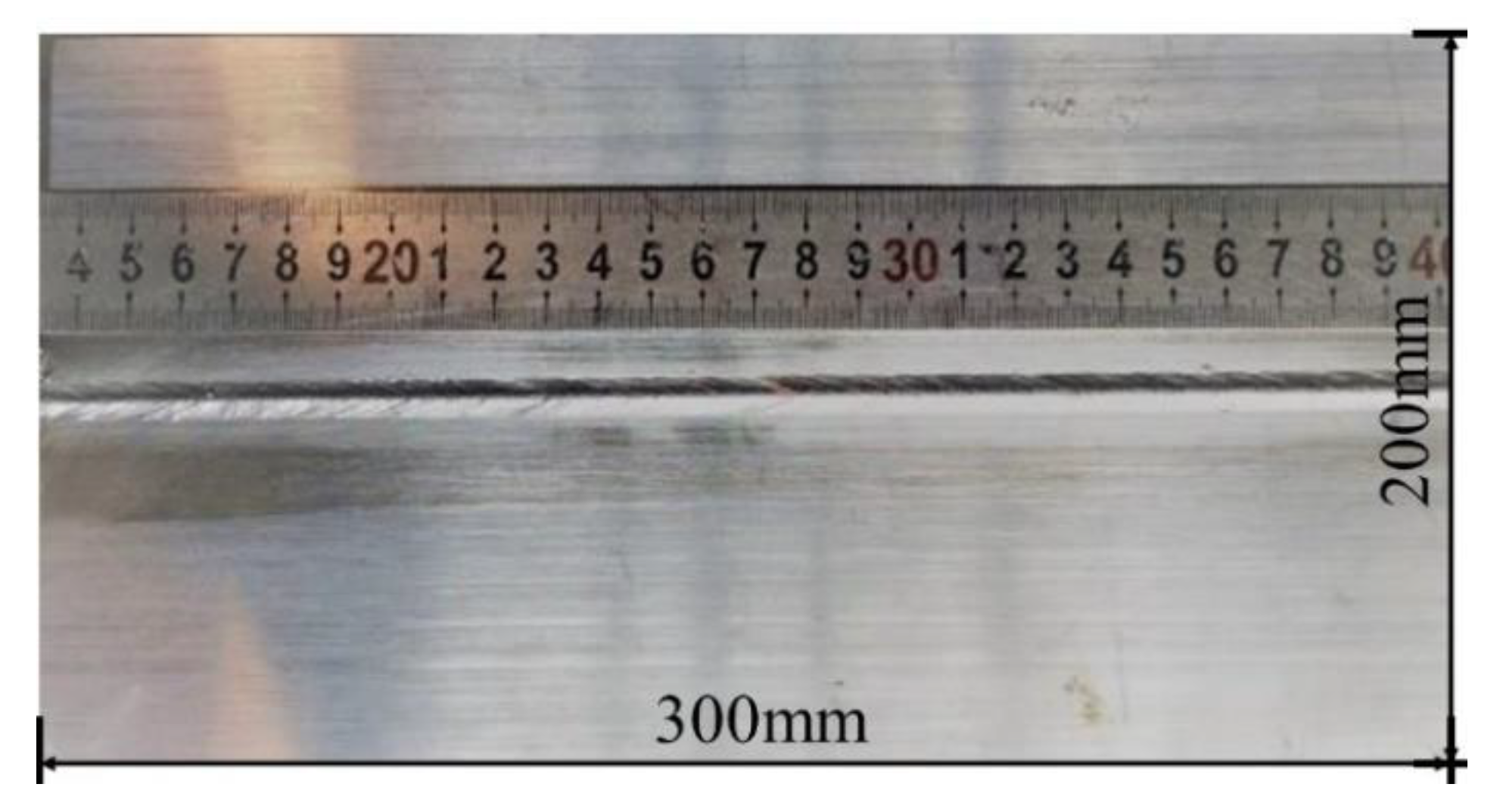


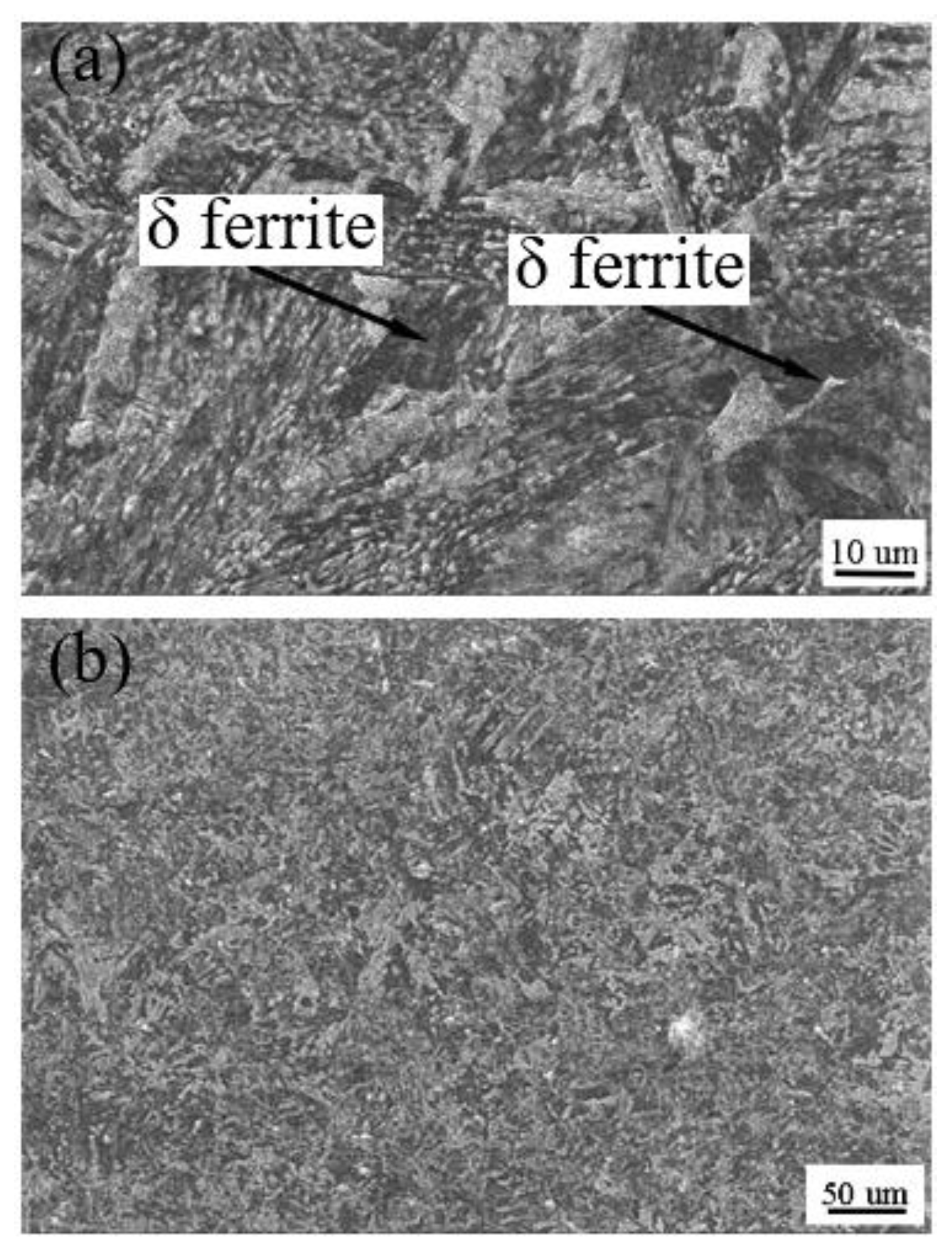

| Cr | C | W | V | Ta | Mn | Si |
| 8.96 | 0.093 | 1.48 | 0.16 | 0.10 | 0.48 | 0.042 |
| O | N | p | S | Ti | Fe | |
| <0.01 | <0.02 | <0.005 | <0.005 | <0.01 | Bal. |
| Voltage Ua/kV | Beam Current Ib/mA | Focusing Current If/mA | Velocity V/mm/s | Working Distance/mm | Oscillation Shape | Oscillation Frequency fp/Hz |
|---|---|---|---|---|---|---|
| 150 | 50 | 2480 | 10 | 300 | circular | 500 |
| 150 | 45 | 2440 | 10 | 300 | circular | 500 |
| 150 | 45 | 2440 | 5 | 300 | circular | 500 |
Publisher’s Note: MDPI stays neutral with regard to jurisdictional claims in published maps and institutional affiliations. |
© 2021 by the authors. Licensee MDPI, Basel, Switzerland. This article is an open access article distributed under the terms and conditions of the Creative Commons Attribution (CC BY) license (https://creativecommons.org/licenses/by/4.0/).
Share and Cite
Zhang, Y.; Wu, J.; Liu, Z.; Liu, S.; Lei, M.; Atif, M.; Liu, Z.; Shen, X.; Ma, J. Optimization of Electron Beam Welding Joint of Water-Cooled Ceramic Breeder Blanket. Materials 2021, 14, 3405. https://doi.org/10.3390/ma14123405
Zhang Y, Wu J, Liu Z, Liu S, Lei M, Atif M, Liu Z, Shen X, Ma J. Optimization of Electron Beam Welding Joint of Water-Cooled Ceramic Breeder Blanket. Materials. 2021; 14(12):3405. https://doi.org/10.3390/ma14123405
Chicago/Turabian StyleZhang, Yong, Jiefeng Wu, Zhihong Liu, Songlin Liu, Mingzhun Lei, Muhammad Atif, Zhenfei Liu, Xu Shen, and Jianguo Ma. 2021. "Optimization of Electron Beam Welding Joint of Water-Cooled Ceramic Breeder Blanket" Materials 14, no. 12: 3405. https://doi.org/10.3390/ma14123405
APA StyleZhang, Y., Wu, J., Liu, Z., Liu, S., Lei, M., Atif, M., Liu, Z., Shen, X., & Ma, J. (2021). Optimization of Electron Beam Welding Joint of Water-Cooled Ceramic Breeder Blanket. Materials, 14(12), 3405. https://doi.org/10.3390/ma14123405






